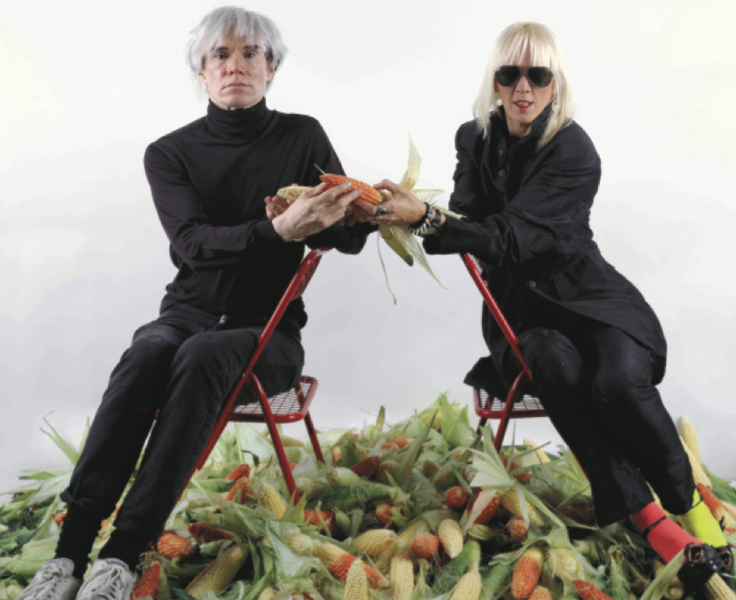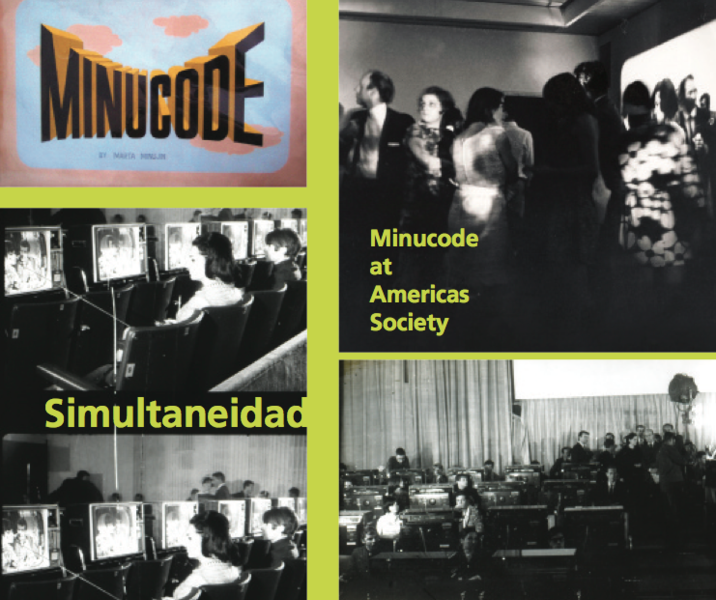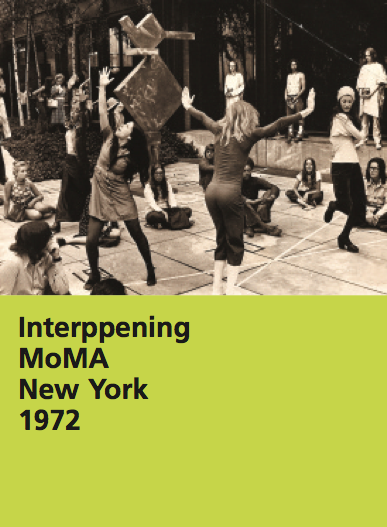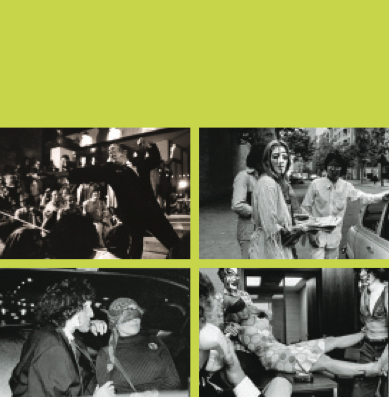Marta Minujín | Short Circuit 1966-1968
MINUCODEs, the Americas Society’s current exhibition of archival materials and a multimedia environment related to participatory works by Marta Minujín in the late 1960s, provides an opportunity to reconsider the Argentine artist’s projects between 1966 and 1968 that were either produced abroad or make reference to international exchange. During this period she was primarily based in New York, producing art that incorporated viewers into shared social experiences, in a manner strikingly similar to some widely discussed examples of contemporary “relational aesthetics”.1 Beyond facilitating this accessible dimension of her work, however, Minujín’s uses of media and choices of participants and venues also served to expose the circuits of cultural and political exchange in which these institutions and individuals—including the artist herself—were ensconced.

In October 1966 at the Instituto Torcuato di Tella in Buenos Aires, Minujín staged Simultaneidad en simultaneidad [Simultaneity in Simultaneity], the Argentine installment of the Three Country Happening, a collaboration with Allan Kaprow in New York and Wolf Vostell in Berlin in which all three artists executed simultaneous happenings.2 In the final phase of her project, Minujín recorded members of the Argentine media via film and audiorecording, subjecting those normally in control of mass communication to its mediatic capabilities. It should also be noted that, in anticipation of her coming move abroad, the Three Country Happening instantiated an international artistic network between Minujín and the Di Tella and artists and institutions in other cities.3 Toward the end of that year, the artist arrived in New York on a Guggenheim Fellowship. In April 1967 she created Circuit, a media environment for three groups for the Pavillon de la Jeunesse at the Montreal World’s Fair. One of the groups watched films and other 4 appraised of the first group’s activity via radio and audio broadcast.
Minujín selected viewers based on questionnaires placed in Montreal newspapers that surveyed personal details such as name, sex, height, hair color, and fashion preference; a computer organized the three groups based on shared characteristics. The project literalized the mass media’s division of receivers of information into different demographics with different levels of access to technology and content. Minucode was organized and executed in May and June 1968 at the Center for Inter-American Relations (renamed the Americas Society in 1984). Questionnaires were again used to divvy participants into one of four professions: politics, art, fashion, or the mass media. Four cocktail parties were held for each of the groups. At each event, eight guests joined artist Tony Martin in the creation of new “media environments” that were collectively displayed in a later exhibition that was open to the public, in which film footage of the parties was also projected onto viewer’s bodies. Noting Minujín’s interest in Marshall McLuhan’s aim to promote increased awareness of the effects of communications media, Alexander Alberro has contended that in Minucode “the particular type of information was irrelevant; what mattered was its interplay with other information...”5 The most “analog” medium that the artist employed, however—the cocktail party—has a highly symbolic value in relation to the work’s context. Funded by the powerful Rockefeller family, the Center for Inter- American Relations was designed to promote democracy over communism and further North American economic interests in Latin America in the midst of the Cold War. Minujín separated viewers into political, cultural and informational fields corresponding to the institution’s interdisciplinary outreach initiatives, and restaged the seemingly benign social events common to all of them for publicity and fundraising.The multilayered projections of the parties turned the institution’s operations back upon themselves, exposing the larger networks that were conditioning both ongoing historical events as much as the artist’s reception and success in the United States. Circuits of ideas and commodities are also present in Importación- exportación (Importation-Exportation), which Minujín organized later that year back at the Di Tella in Buenos Aires.6 In this case there were multimedia environments with footage from the artist’s sojourn in New York relating to the hippie movement. She also staged a “hippie fair” with psychedelic merchandise brought back from the States. As in Minucode, an international network uniting art with other fields of production was signaled via festive events, infusing serious content into participatory spectacle.
Curated by Gabriela Rangel and José Luis Blondet, MINUCODEs presents archival information related to Simultaneidad en simultaneidad, Circuit, and Minucode, and reinstalls the final media environment from Minucode in the institution where it first appeared. Like the Americas Society’s 2006 exhibition A Principality of its Own: 40 Years of Visual Arts at the Americas Society before it, MINUCODEs implicitly argues that the task of the post-Cold War cultural institution is self-historicization. Blondet and Rangel wisely do not attempt to restage Minucode’s cocktail parties; the participatory aspect of the project remains historical. We are afforded an overarching view of all the components and events comprising the work that few, save the artist, were privy to at the time. Minujín’s North-South institution critique, once cloaked as art-leisure, is no longer avoidable.







